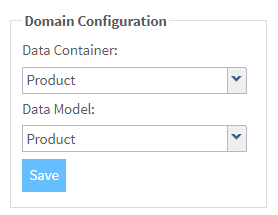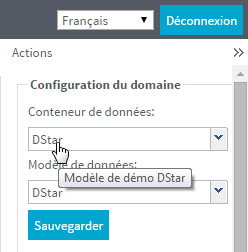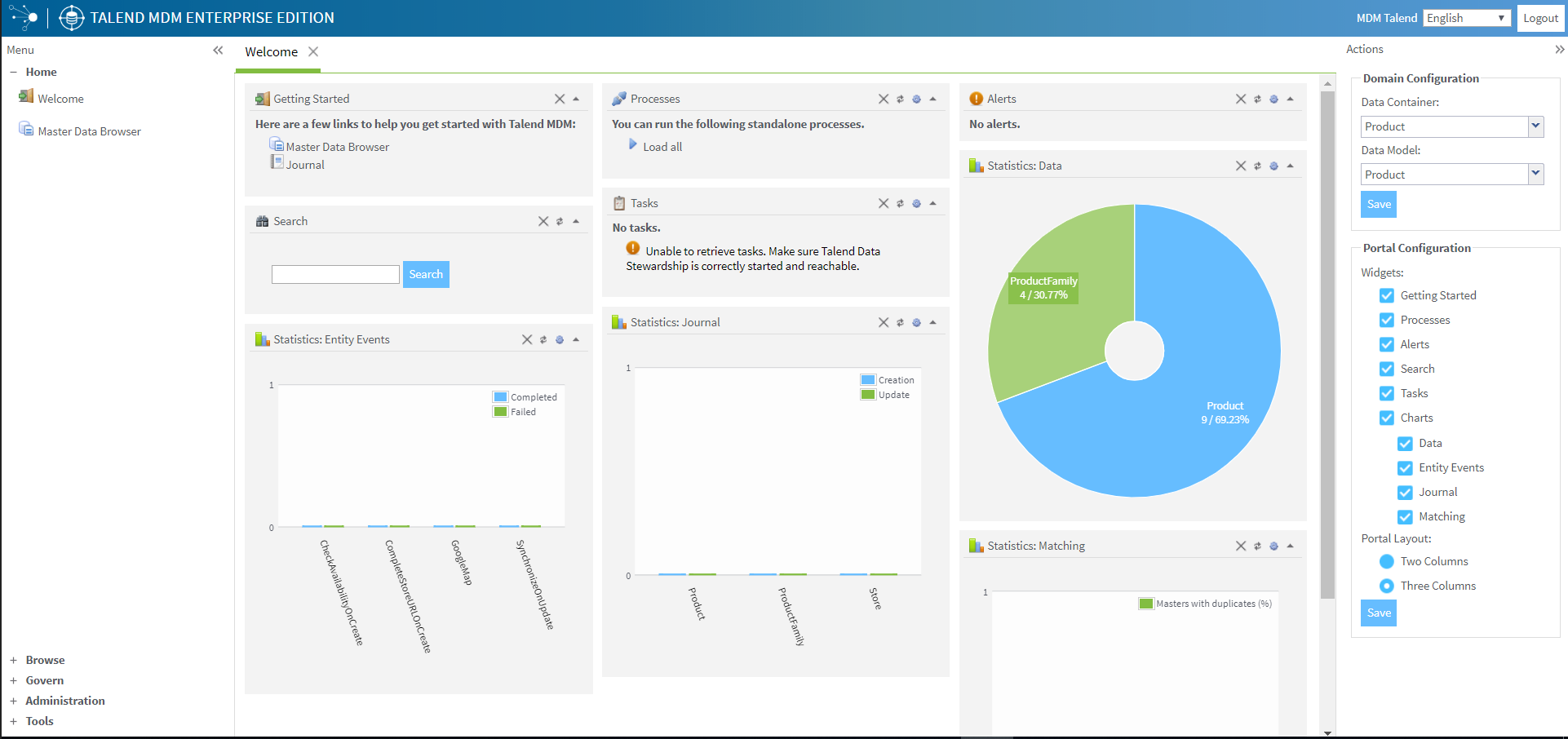|
Getting started
|
Provides direct links to pages of the Web user interface
such as Master Data Browser and
Journal.
|
|
Search
|
Allows you to perform a full-text search across the
selected data container.
Information noteNote: Lucene term search, field search, and wildcard
search are supported. Besides, Lucene fuzzy search is also supported and enabled by default.
- Term search: there are two types of terms, single terms and phrases.
- Single term search: search by typing a single word, for example
Doc, which will return all data records that
contain the word Doc.
- Phrase search: search by typing a group of words surrounded by double
quotes, for example "Talend Doc", which will
return all data records that contain the phrase Talend
Doc.
- Field search: search any field by typing the field name followed by a
colon and then the term you are looking for, for example, Team:Doc, which will return all data records whose Team field contains the word Doc.
- Wildcard search: search by using a single-character wildcard ? or a multiple-character wildcard *.
- A single-character wildcard search looks for terms that match with
the single character replaced, for example, to search test and text, you can use
te?t.
- A multiple-character wildcard search looks for zero or more
characters, for example, the search term doc*
will match doc, document, and documentation. The
multiple-character wildcard can also be in the middle of the term, for example, the
search term b*k will match bank, book, and
black.
- Fuzzy search: search by using a single word term followed by the tilde
symbol ~ and then an optional parameter that can
specify the required similarity. The value of the parameter is between 0 and 1, and the
default value is 0.5 if the parameter is not given. For example, to search for a term
similar in spelling to roam, such as roams and foam, you
can use the fuzzy search roam~0.4.
|
|
Processes
|
Allows you to launch standalone processes manually.
The processes are listed alphabetically in ascending
order based on their descriptions for the current user's
language. If the process descriptions are not available,
they are listed alphabetically in ascending order based
on the process names.
|
|
Tasks
|
Provides direct links to all workflow tasks that require
the validation or approval of the authorized
steward.
If the current logged-in MDM user is also a
Data Stewardship User and has
a data stewardship role of Data
Steward, there may be alerts to newly
assigned Talend Data Stewardship tasks.
If the user is not configured to be a Data
Stewardship User or does not own a
Data Steward data stewardship
role, there are alerts that no tasks are assigned.
|
|
Statistics: Data
|
Allows you to view the actual percentage of master data
records per entity in a pie chart.
An authorized user can click any slice of the pie chart
to open the Master Data Browser
page which lists the master data records pertaining to
the selected slice (entity) with the default view if it
exists. However, if the default view is not available,
one of the alternative views will be used instead; if no
candidate view is available, an error message pops
up.
For more information about Views, see Talend Studio User Guide.
|
|
Statistics: Entity Events
|
Allows you to view the general proportion of triggered
events per type in a bar chart.
|
|
Statistics: Journal
|
Allows you to view the general proportion of create and
update operations per entity in a bar chart.
|
|
Statistics: Matching
|
Allows you to view the general proportion of duplicated
data records in the integrated matching process in a bar
chart.
|

 button to show the
button to show the


